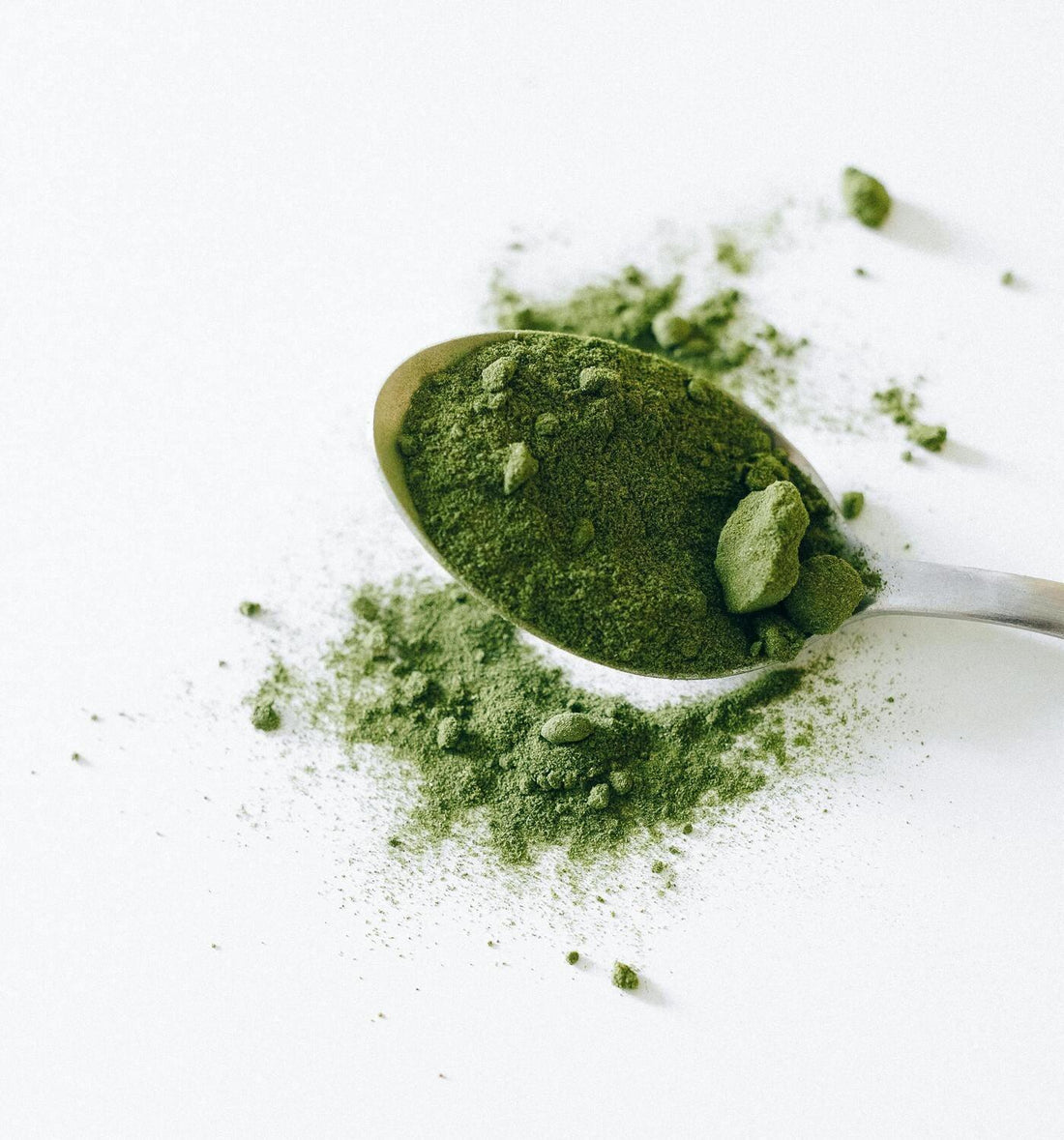
What is matcha?
Marie HubertIf you're not living under a rock, you've probably heard of matcha. But what exactly is matcha? Don't panic! After reading these few lines, you'll be an expert on this Japanese green tea. Settle into your couch and discover the fascinating world of matcha tea .
The history of matcha
Although matcha has only recently begun to gain popularity, its history dates back centuries and is closely linked to Japanese culture. Matcha tea originated in China. Between 618 and 907, tea leaves were steamed, molded into bricks, and then ground into powder before being mixed with hot water. This manufacturing process made tea easier to transport and consume. Later, during the Song Dynasty (960–1279), the art of grinding tea leaves into powder and whisking them in hot water was perfected. This method inspired the development of matcha.

What? Matcha, a Japanese tea with Chinese origins? Are you kidding me?! Patience, patience... We're getting there 😉
Matcha arrived in Japan in the 12th century thanks to a Buddhist monk, Eisai, who brought it back from China. Initially, it was mainly monks and samurai who drank it to improve their concentration during meditation. Over time, the tea master Sen no Rikyu transformed the preparation of matcha into an art, creating the famous tea ceremony . After falling into oblivion in the 20th century, matcha is making a comeback, especially for its health benefits . Today, it is super trendy all over the world!
The main production regions
Matcha tea is primarily cultivated in several regions in Japan. Among them, the most famous region for growing matcha is the Uji region. Located near Kyoto, the climate and soil of this region are perfect for growing high-quality leaves, making Uji matcha one of the best in the world. The Kagoshima region is also located on the island of Kyushu. Its subtropical climate and volcanic soils provide ideal conditions for growing tea.
How is matcha grown?
Matcha cultivation differs from other teas. About 3 to 4 weeks before harvest, tea plantations are covered with tarps or nets to protect the leaves from the sun. This forces the plants to produce more chlorophyll, which gives the leaves their beautiful emerald green color. This technique also increases the production of L-theanine , the amino acid responsible for matcha's umami flavor and relaxing properties. Once the leaves are hand-picked, they are steamed to prevent oxidation, then dried and ground into an extremely fine powder using stone mills.
Culture and tradition around matcha
Much more than just a tea, matcha is deeply rooted in Japanese culture and traditions. The tea ceremony (Chanoyu) is arguably one of the most well-known cultural aspects of matcha. During this ceremony, the tea is meticulously prepared according to precise rules. This ceremony is entirely designed to promote concentration and meditation.
The benefits of matcha tea
Thanks to its richness in antioxidants, vitamins, and minerals, matcha has numerous benefits. Along with a notable energizing effect, drinking matcha green tea also promotes relaxation and concentration thanks to the presence of L-Theanine, a unique amino acid.
The different types of matcha
Although no official ranking exists, we can identify 4 distinct grades.
- Ceremonial Matcha : This is the highest grade of matcha, used in the Japanese tea ceremony. Made from young tea leaves, it offers a smooth, umami-rich flavor without bitterness. Easily differentiated from other grades of matcha, it is characterized by its fine texture and very intense green color. It can be consumed as a beverage, mixed directly with hot water.
- Premium Matcha: A step below ceremonial matcha tea, premium grade is also made from young leaves, but these can be more mature. Offering an ideal balance between sweetness and bitterness, it's ideal for milk-based drinks like matcha lattes.
- Culinary Matcha: This grade is intended solely for cooking and baking. Made from more mature leaves, the flavor of culinary matcha tea is stronger and more bitter than other grades. With a less intense green color than other grades and a more affordable price, it will be perfect for your ice cream, smoothie, or cake recipes.
- Blended Matcha: This matcha is often a blend of several grades. Used for drinks like lattes, smoothies, or certain cooking recipes, it has a more balanced taste . This grade is the perfect in-between between culinary matcha and premium matcha.
How to differentiate a good matcha from a bad matcha?
"So, there's good matcha. Well, good matcha is green tea in powder form... and bad matcha, well... it's also green tea in powder form, but it's bad matcha!"
Do I still have your attention? Very good!
Joking aside, let's see how to differentiate a good matcha from a bad one.
|
Criteria |
Good matcha |
Bad matcha |
|
Color |
Bright green, emerald |
Dull green, bordering on yellowish |
|
Texture |
Fine and smooth |
Coarse and grainy |
|
Taste |
Sweet, rich in umami, without bitterness |
Bitter, astringent and sometimes metallic |
|
Smell |
Fresh, vegetal and slightly sweet |
Bland, earthy, hay-like or burnt smell |
|
Mousse |
Thick, creamy foam on the surface |
Little or no foam, irregular bubbles |
|
Price |
Higher, especially for ceremonial matcha |
Cheaper |
|
Origin |
Coming from a renowned region |
Uncertain or unreputable origin |

Organic label and certifications
Organic labels and various certifications guarantee that the matcha has been grown and processed according to environmentally friendly and health-friendly standards. Certified organic matcha is a guarantee of quality. This means the tea leaves were grown without pesticides or chemicals, ensuring better leaf quality.
Moreover, by avoiding chemicals, the latter is also healthier for consumption.
Preparing matcha
Making a good matcha is a bit like following a magic potion recipe: it requires precision, the right tools, and a touch of serenity. It's not just a matter of pouring hot water over green powder, but rather orchestrating a small ritual that will make each cup unique. Learn more with our guide: how to make matcha tea.
How to consume matcha?
Hot or cold drink
Traditionally, matcha is drunk hot, but in summer, an iced matcha latte is a great option for cooling off. Matcha is perfect for all seasons and occasions.
Incorporation into sweet or savory dishes
Matcha works wonders in pastries. Matcha cookies , a revisited tiramisu , or even a moist cake can surprise your guests. But it also lends itself to savory dishes, particularly in sauces or marinades for meat and fish.
Tips for optimal consumption
To maximize the benefits of matcha, it's recommended to consume it daily, either in the morning or before a workout. The mild caffeine and L-theanine provide an energy boost without the jitters. It's the perfect drink to face the day with energy and calm.



